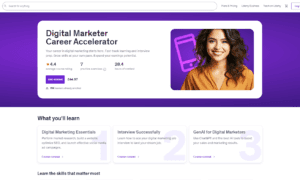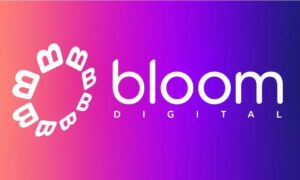Establishing a strong online presence is essential for driving traffic and boosting sales in the financial technology (fintech) market and Content marketing emerges as a powerful strategy to achieve these objectives. By creating and distributing valuable, relevant content, fintech businesses can attract, engage, and convert their target audience. This article explores ten effective content marketing strategies to enhance the visibility and profitability of your fintech business.
1) The Importance of Creating Valuable and Relevant Content for Your Target Audience
The cornerstone of any successful content marketing strategy is understanding your target audience. Identifying their needs, preferences, and pain points allows you to create content that resonates with them. For fintech businesses, this might include topics such as personal finance management, investment strategies, blockchain technology, and the latest industry trends.
Crafting Quality Content
Once you understand your audience, the next step is to create high-quality content that offers real value. This can take the form of:
- Educational Articles: Informative posts that explain complex financial concepts in an accessible manner.
- Case Studies: Detailed analyses of how your products or services have helped clients achieve their financial goals.
- Guides and Tutorials: Step-by-step instructions on using fintech tools and services.
Consistency is Key
Regularly publishing content keeps your audience engaged and coming back for more. Develop a content calendar to plan and schedule your posts, ensuring a steady stream of fresh and relevant content.
2) Utilizing Guest Blogging as a Way to Reach New Audiences and Establish Thought Leadership
Guest blogging on reputable sites within the fintech industry can significantly expand your reach. By contributing high-quality content to these platforms, you can tap into their established audience base, driving new visitors to your website.
Establishing Thought Leadership
Guest blogging also positions you as a thought leader in the fintech space. By sharing your expertise and insights, you build credibility and trust with potential customers. Ensure that your guest posts offer unique perspectives and actionable advice to maximize their impact.
Building Backlinks
Guest blogging provides an opportunity to include backlinks to your website. These backlinks not only drive direct traffic but also improve your site’s search engine ranking, making it easier for potential customers to find you.
3) Partnering with Industry Influencers and Experts for Content Collaborations
Collaborating with influencers who have a strong following in the fintech industry can amplify your content’s reach. Look for influencers whose audience aligns with your target market and who have a reputation for providing valuable and trustworthy information.
Collaborative Content
Partner with influencers to create content such as interviews, joint webinars, co-authored articles, and social media takeovers. This collaborative content can introduce your brand to a wider audience and build credibility by association with respected industry figures.
Measuring Success
Track the performance of your influencer collaborations through metrics such as engagement rates, website traffic, and conversions. This data will help you refine your influencer marketing strategy for better results.
4) Leveraging Social Media Platforms to Promote and Distribute Your Content
Not all social media platforms are created equal. Identify where your target audience spends their time and focus your efforts on those platforms. For fintech businesses, LinkedIn, Twitter, and Facebook are typically the most effective.
Engaging Content
Share a mix of content types on social media, including blog posts, infographics, videos, and live streams. Engaging visuals and interactive content tend to perform well and can drive higher engagement rates.
Paid Advertising
Consider using paid advertising on social media to boost your content’s reach. Sponsored posts and targeted ads can help you reach a broader audience and drive more traffic to your website.
5) Creating Author Bylines on Respected News Websites to Increase Credibility and Reach a Wider Audience
Publishing articles under your name on respected news websites enhances your credibility and authority in the fintech industry. Readers are more likely to trust and engage with content authored by recognized experts.
Reaching a Wider Audience
News websites have large, diverse audiences. By contributing content to these platforms, you can reach potential customers who might not have discovered your brand otherwise.
Strategic Bylines
Ensure that your author bylines include a brief bio and a link to your website. This not only drives traffic but also allows readers to learn more about your expertise and offerings.
6) The Benefits of Incorporating Visual Elements Such as Infographics or Videos in Your Content Strategy
Visual content is more engaging and easier to digest than text alone. Incorporating infographics, images, and videos into your content strategy can capture your audience’s attention and convey complex information more effectively.
Infographics
Infographics are particularly useful for presenting data and statistics in a visually appealing and easily understandable format. They can simplify complex concepts and make your content more shareable on social media.
Videos
Videos are highly engaging and can significantly boost your content’s reach. Create videos that explain fintech concepts, showcase customer success stories, or provide tutorials on using your products or services. Videos can be shared on your website, social media channels, and video platforms like YouTube.
7) How Optimizing Your Website’s SEO Can Improve Its Visibility and Attract More Traffic
Effective SEO starts with keyword research. Identify the keywords and phrases your target audience is searching for and incorporate them into your content. Tools like Google Keyword Planner and SEMrush can help you find relevant keywords.
On-Page SEO
Optimize your website’s on-page elements, including title tags, meta descriptions, headers, and image alt texts. Ensure that your content is well-structured, easy to read, and includes relevant keywords naturally.
Technical SEO
Technical SEO involves optimizing your website’s backend to improve its performance and visibility. This includes ensuring fast load times, mobile-friendliness, secure HTTPS encryption, and an XML sitemap.
Content Optimization
Regularly update your content to keep it fresh and relevant. Search engines favour websites that consistently provide valuable and up-to-date information. Use internal linking to guide visitors to related content on your site, improving their experience and boosting your SEO.
8) Utilizing Email Newsletters and Marketing Campaigns to Keep Customers Engaged and Drive Conversions
An email list is a valuable asset for any fintech business. Offer incentives such as exclusive content, free resources, or discounts to encourage visitors to subscribe to your newsletter.
Crafting Compelling Newsletters
Send regular newsletters to keep your audience informed and engaged. Include a mix of educational content, company updates, and promotional offers. Personalize your emails to address the specific interests and needs of different segments of your audience.
Automated Campaigns
Use email automation to send targeted campaigns based on user behaviour. This can include welcome series for new subscribers, re-engagement campaigns for inactive users, and personalized product recommendations.
Measuring Email Performance
Track key metrics such as open rates, click-through rates, and conversion rates to evaluate the effectiveness of your email campaigns. Use this data to continuously improve your email marketing strategy.

9) The Importance of Regularly Analysing and Adjusting Your Content Marketing Strategy for Maximum Impact
Establish clear goals and key performance indicators (KPIs) for your content marketing efforts. This could include metrics such as website traffic, lead generation, engagement rates, and sales conversions.
Analysing Performance
Use analytics tools like Google Analytics, social media analytics, and email marketing reports to track your content’s performance. Identify which types of content and distribution channels are driving the best results.
Making Data-Driven Adjustments
Based on your analysis, make data-driven adjustments to your content marketing strategy. This could involve tweaking your content topics, formats, distribution channels, or SEO tactics.
Continuous Improvement
Content marketing is an ongoing process. Regularly review and refine your strategy to ensure it remains effective and aligned with your business goals. Stay informed about industry trends and best practices to keep your content marketing efforts fresh and relevant.
Conclusion
Driving traffic and sales to your fintech business website through content marketing requires a comprehensive and multifaceted approach. By creating valuable content, leveraging guest blogging, collaborating with influencers, utilizing social media, building credibility through author bylines, incorporating visual elements, optimizing SEO, using email marketing, and regularly analysing and adjusting your strategy, you can effectively attract and convert your target audience.
Implementing these strategies will not only enhance your online visibility and authority but also foster trust and engagement with your audience, ultimately driving growth and success for your fintech business. Embrace the power of content marketing and watch your fintech business thrive in the digital landscape.



































